Category: Tip’s, Tool’s & FAQ’s
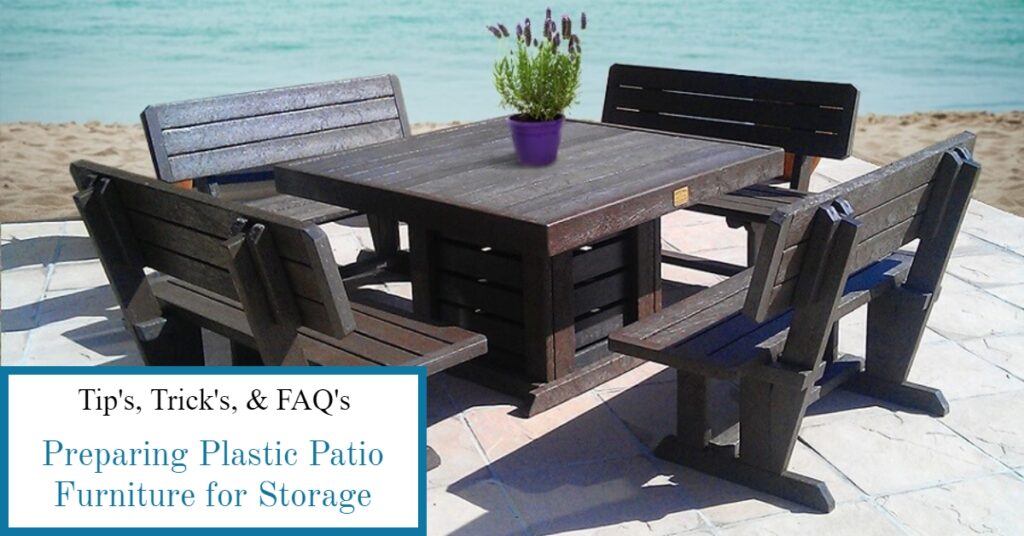
Outdoor living and patio time are some of the best parts of summer in Brewer, Maine. Plastic composite and plastic resin patio furniture have become very popular and for good reason! It is highly durable to withstand the Maine winters and easily cleaned. Cleaning your plastic patio furniture is the single most important thing you can do to keep it looking like new. Keeping your plastic composite and plastic resin patio furniture clean and fresh for the summer is easy with some simple cleaning tips. Use the easy cleaning guide below to clean and prepare your patio furniture for proper storage during the off season. Utilizing self storage will prolong the life of your investment.
Most patio furniture has cushions that require proper care. Read this article about caring for your cushions and storage tips.
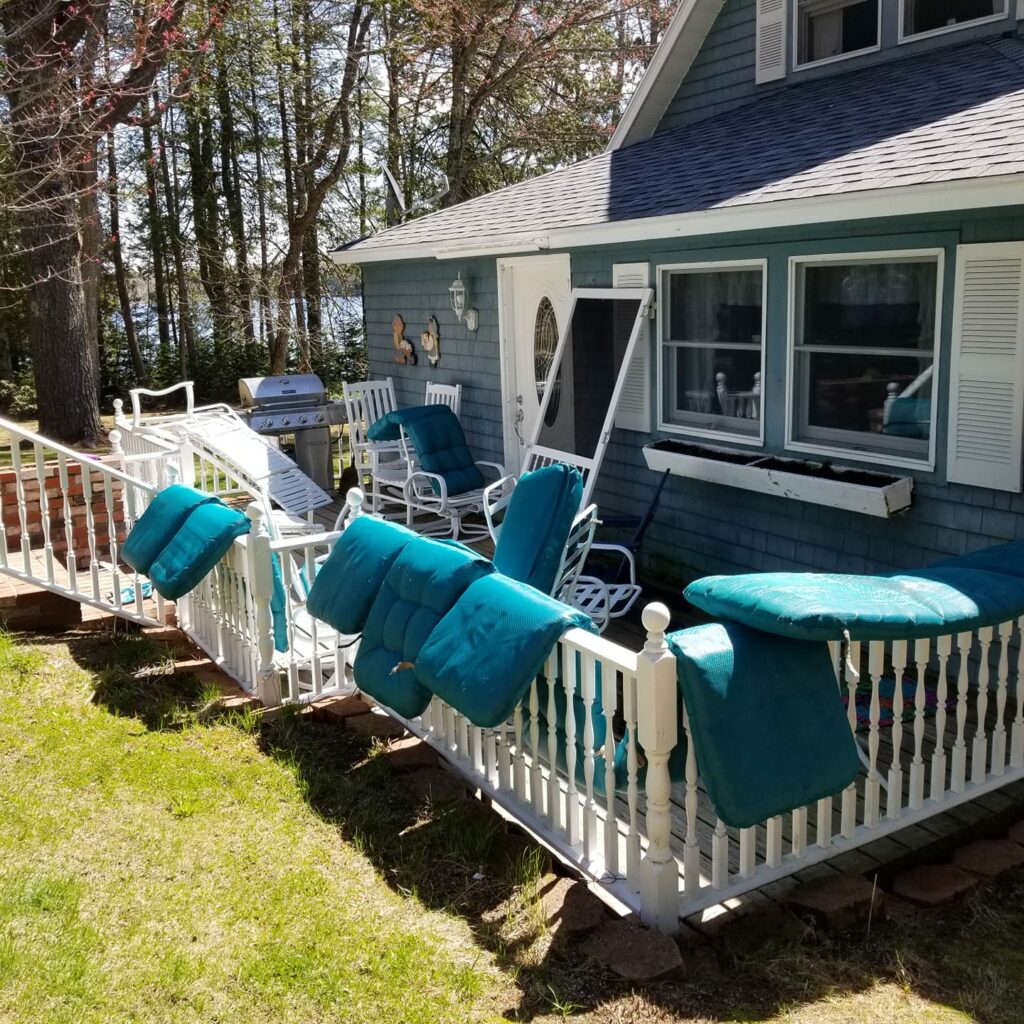
Plastic or Plastic Resin Cleaning tips:
Plastic is the easiest of all to clean. Any type of cleaning solution can be used as long as it is rinsed immediately from the surface. A great cleaning hack for greasy grime is to use shaving cream, spray on the surface and let sit for a few minutes, then scrub with a soft brush until clean, rinse and allow to dry. Molded resin furniture will need to be brushed to clear any debris then wipe down with a mixture of warm water and mild dish soap. Depending on the amount of dirt a sponge will suffice. If it’s a large area of dirt use a soft bristled brush to really clean the affected area. If the finish of your plastic patio furniture is chalky, sprinkle a wet sponge with baking soda and rub the entire piece, rinse off with clean water and dry. To restore shine use paste car wax and cover the furniture with a light coating. Allow the paste to dry for about 5 minutes and then softly buff the glow back into your furniture.
If your molded resin furniture is white and you would like to restore the color of your furniture follow the same instructions for molded resin furniture but do not wax. Instead mix 2 tablespoons of powdered oxygen bleach (like OxyClean) in a gallon of water or if you have tough stains mix 1 cup of liquid bleach with a gallon of water, don rubber gloves and sponge the mixture onto the furniture and scrub until the stain is gone. Let the mixture sit on the surface for 5 to 10 minutes then rinse with clear water, dry and follow with the wax step above for a sparkling shine.
Textured plastic composite furniture will need a soft bristled brush to clean the lines and crevasses. Follow the grain of the composite and rinse well to ensure all soap is removed from the texture. A low pressure rinse will whisk the soap from any deep texture.
Wicker and Wicker Resin Cleaning tips:
Traditional wicker should only be used indoors or on a screened in porch to protect it from the elements. It doesn’t fair well left outside because of the organic material real wicker is made from. Clean using a vacuum cleaner with the soft bristled brush attachment. Damp cloth away any spills with a solution of warm water and white vinegar in a 50/50 mixture. This will prevent mold and mildew on your wicker. Allow to air dry completely before storing.
Traditional wicker has been replaced with a wicker resin weave that is super durable and weather resistant but retains all the charm of traditional wicker. Cleaning wicker resin furniture will keep it looking new and extend the lifespan of your investment. Use a soft bristled brush for surface debris, vacuum with a brush attachment for deeper debris. To deep clean the weave use a pressure washer set on low or moderate and wet the entire piece, then gently scrub with a hand brush and warm soapy water. Rinse well and allow to air dry in a shaded area until completely dry. Storage tip: remove the cushions and place cleaned and thoroughly dry cushions in a garbage bag with a dryer sheet to protect them from rodents. Wrap your clean dry wicker resin furniture in plastic to keep dust or dirt away from the weave. This will save you time in the Spring when it’s time to bring your patio furniture from storage!
Mold and Mildew Removal Tip:
A generic mold cleaning solution that will work on most surfaces is a 50/50 mixture of water and white vinegar sprayed on the surface of your furniture, let set 30 minutes before rinsing followed with a towel dry and then allow to thoroughly air dry. Mold and mildew if left untreated will permanently stain your furniture. Once the furniture has been cleaned and dried, if you notice mold and mildew stain you can retreat for mold and mildew or use the bleach method above to remove the stain.
Cleaning plastic composite and resin patio furniture is the first step in preparing your furniture for self storage. Most plastic resin furniture can be stacked without fear of damage. It is the easiest of all patio furniture to store. Wrapping wicker resin furniture helps keep it fresh for the next outdoor or patio living season!


What is climate control storage and do I really need it for my possessions?
This is the most asked question when considering self storage in Ellsworth, Maine and the surrounding areas. Climate control is when the external temperature and humidity are no longer part of the equation for possible damage to your valuables. The humidity level is kept in the optimal range of 35 to 50% to prevent damage from excessive moisture or drying from too little moisture which can be devastating to wood and leather. The temperature is kept within a range relative to the outside temperature to prevent drastic temperature fluxuations. Condensation and moisture caused by this drastic change can wreak havoc on stored items.
When considering climate control ask yourself a few questions to determine if climate control is needed for your possessions. Use the chart below to help.
| Question | If the answer is yes… recommendation | If the answer is No… Recommendation |
| Will it freeze? | Climate Control Storage | Drive Up Storage |
| Is it replaceable? | Drive Up Storage | Climate Control Storage |
| Will it be stored for longer than 6 months? | Climate Control would be best esp in extreme temp fluctuation conditions | Drive up is ok for short periods |
| Is it an heirloom? | Climate Control Storage | Drive Up Storage |
| Will moisture of any kind ruin it? | Climate Control Storage | Drive Up Storage |
| Will the temperature have drastic changes during storage time? | Climate Control Storage | Drive Up Storage |
What items should always be stored in climate control to protect them?
The following list contains items highly recommended for climate control:
- Photographs ~ moisture will destroy photographs or cause them to stick together
- Artwork including refrigerator art ~ canvas, paper and wood should all be stored in climate control
- Heirlooms ~ keepsakes and valuable heirlooms will succumb to moisture ruining them
- Electronics ~ check manufacturers recommendations for storage
- Antiques ~ moisture and dryness are both enemies of antiques
- Leather goods ~ from jackets, to furniture and sports related items if it’s leather extreme heat and/or dry air will ruin them.
- Musical instruments ~ the delicate nature of instruments require the humidity controlled environment of climate control
- Important papers or documents ~ moisture is the bane of paper, it can cause destruction beyond repair in a short period of time.
- Sports Equipment ~ especially leather in nature
- Medical supplies ~ most medical supplies can freeze causing them to become useless
- Makeup and toiletries ~ lots of makeup items will freeze ruining them or moisture will destroy their usefulness.
- Art supplies and paint
- In colder climates washers and refrigerators with ice makers any water left in the lines or pump will freeze and burst causing them to leak.
In conclusion, climate control is your best option for long term storage to help prevent damage caused by extreme temperature changes and humidity levels. If your storage needs are for a short period of time drive up or conventional storage will suffice. If you have any questions ask the facility manager for their recommendations.
PRO TIP: If you opt for outside, drive up storage, stop by your unit every few weeks during the Fall and Spring months when temperature changes are the most drastic and open the door for 5 to 10 minutes allowing the air to circulate and help reduce the possibility of condensation in your unit.
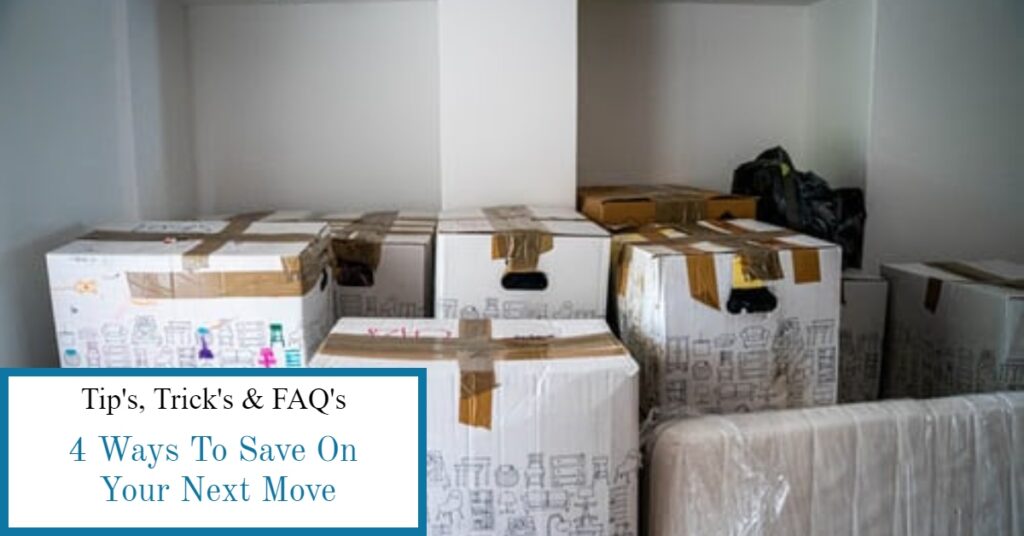
Have you considered moving, like an entire interstate relocation and change of city process? Even if you haven’t considered it, it could happen anytime. According to the United States Census Bureau, an approximated number of 31 million Americans move each year, and as much as 3 million, move interstate.
Various reasons can prompt the need to move out of state. These reasons may include the need for a fresh start in life, an office promotion, traveling for further education, moving in with a partner in a different city, or the loss of a loved one resulting in the need to sell off property as soon as possible to trusted house buyers.
Whatever the reason may be, the easiest part of moving out of state is “the decision” to move. Every other part of the process is challenging and has some concerns associated with it.
Some of these challenges include:
Leaving all previous experiences, friends, and family
This process is not an easy one. From the moment you announce your possible move out of state, even for new and exciting opportunities, the gloom sets in. Subconscious sadness and a wild attempt to adjust to the reality of living without family and friends, with whom you have created amazing memories, becomes a daily routine. This does not mean you will not move, you will, probably amidst tears.
The cost of moving out of state
Moving out of state costs a lot of money. If you have lived in your current city for a long time you may have accumulated a lot of belongings. These belongings may include presents from all forms of celebrations, the spur of the moment purchases you never used, and the non-essentials needed for daily comfort.
If you have to move with all of these belongings, you are going to need a truck or a mover, and the larger the truck, the greater your expense, amidst other payments. The estimated average cost for an interstate move is $4,800. That is an amount you may be concerned about spending. However, there are easy and effective ways to save money on your next move out of state, whenever that may be.
Four Ways To Save Money When Moving Out Of State
Tip #1 Rid yourself of sentiment. Don’t move what you don’t need.
This may be a good time to make some extra cash, you are moving to a new state and need all the money you can get. How about creating a note, honestly taking into consideration every belonging you own? Yes, you may need to sell off some of them.
The television set no one ever used, the worn-out favorite couch from a decade ago, the grand piano your mum loved greatly which no one plays it anymore since her death, bulky electronics and furniture, the list should be as exhaustive as possible. What do you have on that list which you haven’t used in a year? This is a tough decision, but to save money, you need to get rid of them.
Don’t move what you don’t need. You can sell them off locally at garage sales, list them online using apps or on local social media communities, and for those items that you love dearly, you can offer them as gifts to friends and family who need them. With this, now you have the essentials left.
Tip #2 Use local storage facilities.
Using a storage facility is cost-effective. Having sorted through your belongings and gone through the gruesome task of decluttering, now you have the essentials—properties and belongings you have to keep. Some of these belongings may not be needed for immediate use. If you can live without them for a while then maybe you should opt for an affordable and safe storage facility. This will save you the stress, time, energy, and money required to move everything across the state.
The average standard storage unit rent costs $60 to $180. Additionally, you can save more money by taking appropriate measurements of your fixtures’ dimensions, especially the furniture, and running the measurement by the unit estimator to ensure you pay for the right unit size. Also, you get to choose favorable conditions for the storage of your items—climate controlled or non-climate controlled, anything to keep your items safe.
Tip #3 Do some local search to source storage boxes.
When moving, you don’t need to buy new storage boxes. Some open conversations in your neighborhood, physically or in online communities requesting storage boxes can get you all the storage boxes you need. Even if you don’t get them completely free, you can get them at heavily discounted rates. However, as much as you can, try to fit your items into equal-sized boxes. This ensures that the boxes can be packed properly without tipping, whether they are moved miles across the state or moved to a local storage facility for safety.
Tip #4 Call in favors from friends and family.
What do you have left to move across the state? Can your friends and family help you move them? If all you have left are easy fixtures and properly packed storage boxes, then you may call in your friends and family to help you move.
Instead of paying professional movers, you get to buy boxes of pizza, have a merry inter-state trip, and also get a new company on arrival at your new house. While this is a great tip, you need to consider how far your new location is, and also ensure that your friends/family can move whatever items you have efficiently to this new location.
Moving out of state is not an easy task, there will be various challenges and unbudgeted expenses before, during, and possibly after moving. Consider all your options meticulously and explore all possible ways to save money, you will need the extra cash at your new location.
Try to avoid moving during the busy or peak travel period, it will save you some money. Even if you have to move during a busy period, if you don’t have to move everything at the same time, you can opt for a storage facility, keep your belongings in a safe unit and move them at a convenient time.
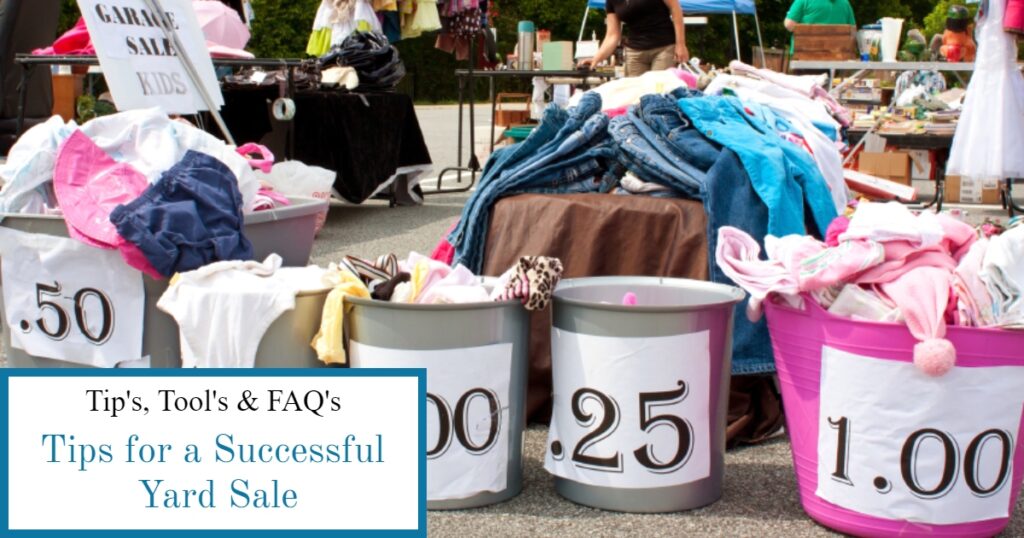
Tips for a Successful Yard Sale
The official start of Spring is in March but in Maine Spring begins for most with the first yard sale. Yard sales are a favorite hobby of the avid bargain hunter. Hosting a successful yard sale is a lucrative event. Successful yard sales take planning and organization, so having a clear plan of action can greatly reduce the stress and extra work associated with a yard sale. There is a huge difference between a well planned yard sale and one thrown together at the last minute. It’s evident the second you walk into the yard. Rows of neatly laid out items, clearly marked with prices as opposed to piles of things heaped on the lawn with no tags. It’s definitely worth the time and effort to plan and organize your sale. Most people will walk away from the heaps of items piled on the lawn. Tips for planning a successful yard sale are below.
If this is your first time hosting a yard sale take a little time and think about the yard sales you have been to. Were the items displayed in a pleasing manner, how were things tagged, what did the signage look like. These clues can help you plan your yard sale with a few extra tips listed below.
Planning Tip:
Plan far in advance. Choose a date and stick to it. Decide if it’s going to be a one day deal or a two day event, typically 2 day events are more successful. This will help you break down the list of things that need to be done in a timeline. The timeline will help you keep on track and make sure you aren’t rushing at the last minute to complete tasks that could have been done weeks or months ago for a smoother sale. This is what a typical timeline could look like.
January/February: Declutter the house and sort sale items, donation items into bins. Throw out the other things that no longer have a use. Arrange to donate the items sorted to appropriate organizations.
March: Clean, wash and repair all the items for the yard sale. Organize them into boxes or totes to keep them organized. Price the items that need to be priced. PRO TIP: Sort into categories to make set up at your sale easier. Label the totes with the category. The Dollar Store is a great place to find inexpensive price tags or masking tape and permanent markers for pricing your yard sale goodies!
April: Research expensive items or old items for their current value. You wouldn’t want to put Aunt Betty’s 1890 painting she had hanging in her living room for $5.00 to find out it’s worth $5000.00 to a collector. Those items will require a different kind of sale to gain the best value from them. PRO TIP: Pricing can be tricky too high and no one will be interested so remember yard sales are for bargain hunters and price accordingly. It is best to keep sentimental value out of the equation when deciding on a price. For new or larger items like furniture, the best rule is 25 to 30% of the original value. For example, you purchased a table for 100.00 ten years ago and it’s still in great shape, at your yard sale the price tag should be 25 to 30 dollars and be prepared to haggle.
May: Make signs that are easy to read. Plan out your advertising. Keep it simple to gain the biggest return on your sale. Plan how your yard sale will be laid out, keeping in mind the successful yard sales you have been to before. Gather the items you need for the day of the sale: tables, chairs, cash box, cooler with lunch etc. Have an exit plan for the yard sale: a bag full for 1.00 so you have less to take down or nothing special because you plan on having another yard sale in the next weeks or months. Know ahead of time what you want so you can plan accordingly. PRO TIP: Keep your signs simple and easy to read, choose fluorescent colors to catch the eye. Keep the sign to three lines: YARD SALE, Date & Time, Location remember people will be in their cars driving by so the larger the letters the better. Also choose a stop sign or location where people will have to be going slow so they have time to read it all. If you need extra tables consider using boards and boxes to create tables. Plan on donating the left over items from your yard sale? Make arrangements now to drop off or arrange to have someone pick up your donations.
Week to several days before sale: set up tables and put up the signs in strategic locations to make people aware your sale is happening. PRO TIP: Plan the layout of your sale and have it on paper so when it’s time to set up you have a clear idea of where things will go.
2 days to the sale: start putting out things that can be protected from night time dew or rain. You can hide sealed totes under the tables making the day of the yard sale an easier set up. Have help moving big furniture pieces into place and cover them with plastic for protection. PRO TIP: This would be a great time to verify everything is clearly marked with a price. If you like to haggle you can make your yard sale a “name your price” sale but have in mind a fair price for someone who doesn’t want to haggle. Use the Dollar Store again for inexpensive plastic tablecloths or coverings.
1 day away: get balloons to add at the end of the driveway with your sign to catch people’s attention. Put out as much stuff as you feel will be protected from night time moisture to help you be more prepared for the day of the sale. Make sure you have change for sales and bags to help people take home their treasures. If you need to make signs for the fill a bag for the last hour of your sale have them ready. PRO TIP: Have help lined up to help you set up and take down the sale at the end. Set up your check out area in the shade or have a popup canopy for your protection from the sun.
Day of the sale: Make sure you have enough time before the sale starts to have everything set up. Have your cooler packed the night before with your water and lunch to save time. Place your attention-getting sale sign with the waving balloons early. Lock your house for your protection while the sale is going on. You wouldn’t want strangers wandering into your home while you were occupied with the sale. Another safety tip is to keep your coins for making change in a money box but the bills on your person. PRO TIP: Have someone lined up to come give you a quick break to use the restroom throughout the day.
This is a basic outline, it can be changed to suit your needs. Clearly planning helps keep your sale moving along and eliminating the last minute rush and stress. Ultimately the success of your yard sale rests a lot on the items you have available, the prices you have set and what your bargain hunter is looking for. Having a wide variety of items helps you appeal to a broader range of shoppers! Good Luck and Happy Yard Sale!
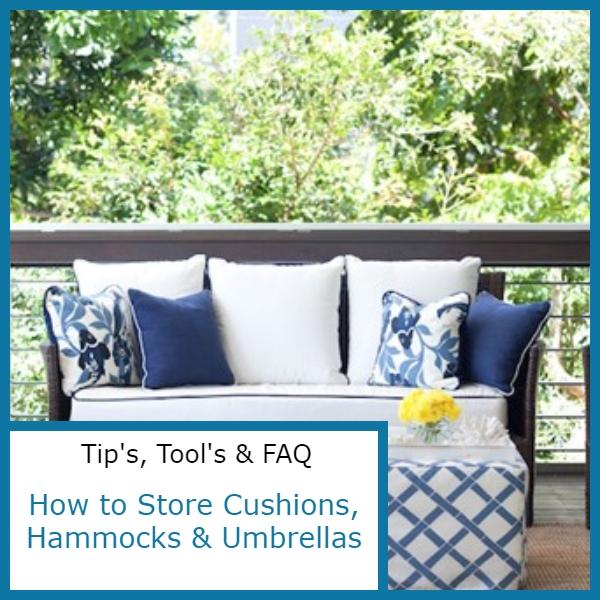
How Do You Clean and Store Patio Cushions, Hammocks and Umbrellas in Brewer, Maine?
Living in Brewer, Maine has its challenges especially when it comes to your outdoor living time. The season for patio and outdoor living in Brewer last about five months which means your patio furniture is stored appropriately seven months of the year. Ever take your patio furniture out of storage and find mold and mildew have taken up residence on your cushions, hammock or umbrella material? Preventing this phenomenon starts before putting your patio furniture in self storage. Simple cleaning tips for optimum self storage of your outdoor living investment can help prevent damage during it’s off season time.
Cushion Care:
No list of cleaning tips would be complete without discussing the cushions used to create your comfortable patio or deck space. Cushions are either removable or not. The removable cushion covers can often be washed in a washing machine with any laundry detergent. Cleaning your cushion covers by hand is the best way to give them a really deep cleaning. First remove the foam core, then remove any loose dirt by brushing the cover. Next soak the covers in a bucket of warm soapy water, then scrub with a soft bristled brush. Cleaning Tip: Scrub the inside of the cover as well, to remove stubborn or deep stains. Then rinse with clean water and allow to air dry thoroughly before reinserting the foam cores.
Non removable cushions are almost as easily cleaned. Sponge on the warm soapy water and rub to create a foamy coating on your cushions. Scrub any extra dirty spots with a soft bristled brush until the dirt is gone. Use a high pressure setting on your hose nozzle to rinse the foam and all soap residue from the cushions. Squeeze excess water from the cushions and allow them to thoroughly dry.
Cleaning tip: If your cushions already have some mold and mildew, mix a solution of 1 gallon of water, 1 cup of bleach and ¼ cup of mild detergent. Using a spray bottle, spray onto the affected area, allow to soak in for 15 minutes or so then use a soft bristled brush on the area until the mold and mildew are gone. A sponge or cloth will work equally as well to remove the mold or mildew stain. Storage tip: Place thoroughly dry cushions in plastic bags to protect them during storage. Garbage bags work great for storing cushions. Add a strong scented dryer sheet for fresh smelling cushions in the Spring plus mice dislike strong odors which will help protect your cushions from rodent damage while being stored. Keep your cushions off the floor especially if it’s a concrete floor. Moisture is the leading cause of damage to stored cushions.
Hammock Care:
Remove the hammock from its frame, lay on a tarp and sweep off any surface debris. Wet the entire hammock with a hose. Using a mixture of warm water and dish soap sponge clean all surfaces of the hammock. Rinse all soap from the hammock and dry thoroughly. Cleaning tip: If mold and mildew have stained your hammock material use full strength white vinegar and scrub the area using a hand brush, allow to sit for 10 minutes or so then rinse and allow to dry before storage. Once dry, fold and store in a contractors garbage bag or wrap in plastic to protect the hammock during storage. Storage tip: if your hammock frame is easily disassembled place it in the same bag. This will make finding all the pieces easy when you are ready to relax on your patio again next summer!
Umbrella Care:
The fabric of your umbrella is easily cleaned once you remove it from it’s frame and lay it out on a tarp to protect it from grass and dirt while cleaning it. Sweep the loose debris from the fabric, scrub any mold or mildew areas with a dry brush, then wet with a hose until all the fabric is wet. Mix a cleaning solution of 2 cups of warm water, 2 cups of white vinegar and a tablespoon of dish detergent (Dawn cuts grease). Scrub the umbrella fabric with a hand held brush and the cleaning solution until the entire umbrella is covered. Let the solution set for 10 minutes then rinse with a hose to remove all of the cleaning solution. Allow to air dry thoroughly.Cleaning tip: Treating the umbrella fabric for mold and mildew before storage will help protect it during the months stored. If after cleaning you see additional mold and mildew stains wet the fabric and scrub using a hard brush and full strength white vinegar, allow to sit for 10 minutes, rinse clean and allow to dry. Storage Tip: Place a clean and dry umbrella in a bag and tie to the cleaned umbrella frame.
Mold and Mildew Removal:
A generic mold and mildew cleaning solution that will work on most surfaces is a 50/50 mixture of water and white vinegar. Spray on the surface of your furniture, let it set 30 minutes before rinsing. Follow with a towel drying and then allow to thoroughly air dry. For extensive mold and mildew removal especially on fabrics like cushions, hammocks and umbrellas, dry brush the area to remove surface mold, rinse and allow to dry. Scrub using a hand brush and full strength white vinegar completely soak and scrub the affected area, let sit for 10 minutes then rinse off with clean water and let dry. Protecting your outdoor living and patio furniture from mold and mildew is important to prolonging the life of your investment.
Cleaning your furniture properly before putting it in self storage is the best way to protect it. An additional step would be to add strong scented dryer sheets in the bags to prevent rodent invasion. They dislike strong odors. Check with the storage facility to be sure they have pest control methods in place. With regular cleaning and proper storage you can enjoy your patio living space for years to come.
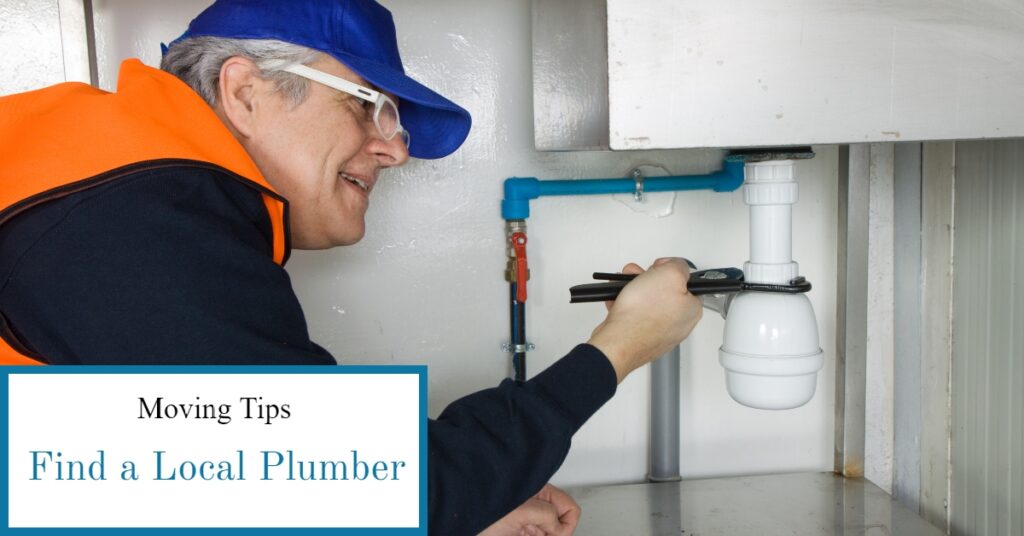
How to find a local plumber
Moving has many challenges including finding service people, especially a good local plumber, to help keep your new home in Brewer, Maine running smoothly. Finding a good local plumber before an emergency strikes can make the difference between minor damages or a total catastrophe. When finding a local plumber your first resource could be the previous home owner. If they had a local plumber you could ask who they used and how they felt about their service. But what if they didn’t have a plumber or didn’t like the plumber they had? Here are some important questions and considerations when searching for a good local plumber.
Referrals:
If you have family or friends who live close by, ask for a referral. Ask if the company or plumber provides emergency services, as we all know emergencies rarely happen during regular business hours. Still research the referral they may or may not be a fit for you. If you don’t have family or friends close by, use the Internet and search for “Local plumbers near me” read the reviews, both the positive and negative ones. Pay attention to how the owner or plumber responded to the negative reviews. Was the issue resolved, did the company respond compassionately or defensively. These would be a huge consideration when choosing a local plumber. Also use the Better Business Bureau, on the BBB website you can look up the rating for a company.
Communication:
Communication is one of the most important aspects of any business relationship. Your first contact with the local plumbing company or plumber will help you determine the likelihood of a good fit. The initial contact can be a huge clue as to the level of communication you can expect if you become a client. Where they courteous or curt, do you feel like all your questions were answered or not? These are some things to think about after your conversation.
Licensing and Certifications:
All states require some form of licensing or certification to become a plumber, be sure to ask for their license number and verify it. Your State’s government website has a “verify a license” tool, easily accessible via a web search for <Maine (or your state) plumbing license lookup>. The tool is easy to use and will verify the plumber’s license! Ask if all their employees have a license and if you can request a master plumber if you feel the job requires their expert knowledge. A master plumber has years of experience and even though their hourly rate is generally much higher than a journeyman’s rate they could save you time and money with their extra knowledge.
Insurance and Bonded Company:
You should ask about the type of insurances they hold. As a business they are required to carry some form of liability insurance to cover you if there is an issue. They should also carry Workers Comp Insurance to protect their workers from any injury they incur. If they don’t have workers comp insurance be aware that you will be held responsible for any and all injuries that happen while working on your house. The next type of insurance is bonding. Bonded means a bonding company has set aside a certain amount of money in the event a customer files a claim against the plumbing company. The state holds control of these funds not the plumbing company. You should check to verify they are actually bonded as well.
If you choose a company that isn’t bonded and insured and something happens while they are on your property you accept all the responsibility for any injury or damage. It’s not worth taking the risk for a cheaper rate. You could ultimately lose everything because you chose a company that was uninsured and not bonded.
Emergency or After Hours Service:
One very important consideration when choosing a local plumber is; Do they have an “on call” service? Do they provide assistance when an emergency arises at 2am on a Sunday morning? Most companies will only take on your emergency if you are already a customer. It is recommended that you schedule a routine service call to establish that relationship. Walk through your home, take note of any leaky faucets, low pressure in your shower head or sinks, drains that are not going down well, etc and call to set up an appointment. This will establish your relationship.
Rates:
Rate comparison may be the most confusing aspect of finding a local plumber. There are many variables to a rate. Some companies have a flat rate for a certain service and an hourly rate for others. It’s important to find out as much as you can about how they bill to avoid a shock after a service call. Ask the following questions:
- Do they bill for travel time?
- Do they have a minimum charge rate? IE will they bill you for an hour even if the tech is only there for 30 minutes
- How do they bill if it goes over the minimum time? Some bill by the 15 minute increments after the first hour and some in 30 minute increments.
- What is their rate for a master plumber, a journeyman, or an apprentice?
- What is the emergency rate? Most places have a different rate for emergencies
- Can I request a certain plumber? This is important if it’s not a single person business.
The average range for the hourly rate goes from $45/hour to $150/hour. The higher end of the rate scale is for the master plumber or the emergency rate. Remember the hourly rate is only part of the equation for your total bill, included will be travel time(if charged), materials, parts and supplies if used.
Finding a good local plumber can take a little time but when an emergency does happen you will be glad you made the effort and are already a customer. One call and your plumber is on the way hopefully before any real damage occurs. If the unthinkable does happen remember to use self storage while the damage is being repaired!
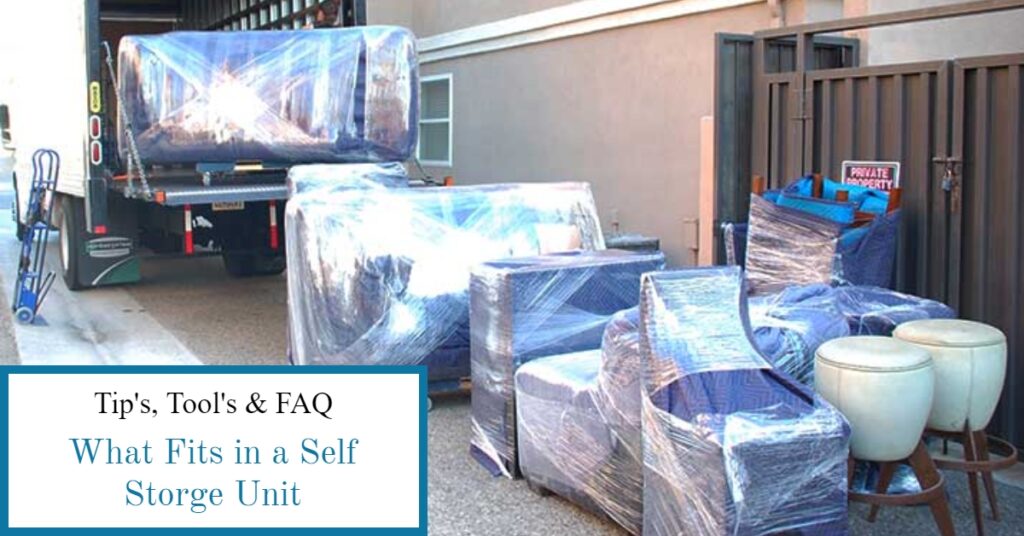
If you are like most of us square footage means nothing. Short of pulling out the tape measure and measuring out the area of a self storage unit in Bangor, Maine and visualizing if what you have will fit into that space. It’s hard to imagine. Then take into account the height of the self storage unit this will also influence what will fit. Choosing a self storage unit that is appropriate for your needs can be easy by using the size guide below and utilizing the knowledgeable staff in Bangor. Safety tip: boxes and totes should not be stacked higher than your shoulders. Lifting heavy items from over your head can lead to injury so use care when stacking your boxes and totes in self storage.
The self storage industry uses standard size guides to help determine what will fit into a designated size unit. Take into consideration if your items are larger or smaller than the standard size when making a decision on a unit. Between the size and height of a unit and the measurements of the items going into storage, you can see how tricky it can be to choose the right size for your needs. Self storage facilities have a simple size guide that can assist you in choosing the correct unit. This size guide will provide you with a general idea of what will fit in a self storage unit based on the size.
5×5 Size Guide:
A 5×5 self storage unit is like a small closet, great for storing a small dresser, a twin mattress and several small boxes. It is also perfect for seasonal decorations, clothing, sports equipment, lawn and garden tools or just a little extra storage space if you have a small apartment. Looking to store old files from your office? 40 standard file boxes will fit in this size unit.
5×10 Size Guide:
A 5×10 self storage unit is like a walk in closet. This size is great for a couch, chair, standard bureau and some small boxes. For an office looking for some off site storage 85 standard file boxes will fit.
10x10 Size Guide:
A 10×10 self storage unit is equivalent to an average bedroom. This size will hold the standard furnishings from a one bedroom apartment. For off site storage for standard file boxes it will hold about 170 standard sized boxes.
10×15 Size Guide:
A 10×15 self storage unit is equivalent to a large bedroom. This size will hold the furnishings from a 2 bedroom apartment or a small house. Offices needing off site storage will be able to store 290 standard sized file boxes. A two door small car can be stored in a 10×15 unit.
10×20 Size Guide
A 10×20 self storage unit is like a large one car garage. This size will hold furnishings from a 3 or 4 bedroom apartment or house. A car, truck or small tow-behind camper can be stored in a 10×20 unit.
10×30 Size Guide:
A 10×30 self storage unit has the capacity to hold a 5 to 7 bedroom house. This unit can easily hold a car or truck plus the furnishings from a small house. This size unit is great for a large tow-behind camper or a small RV. The size of the RV or camper is limited by the height of the door for access and the length of the vehicle.
If the simple guide above doesn’t clarify the size needed we have three resources available to assist in a decision on the appropriate size. The first is our Size Guide , the Space Estimator and our friendly, professional staff who are always ready to help you.
What if I choose the wrong size and realize it after I’ve rented the unit? If you find you need a larger space the facility manager will be able to easily assist you. What will fit in a self storage unit can vary depending on your packing and stacking skills. A nicely packed unit will hold more than one that is unorganized. Tip: consider using a moving company to move your items into storage, they pack and stack for a living!

Ten Easy House Staging Tips!
Everyone’s heard of curb appeal but does it stop there? The outside is manicured to catch a potential buyer’s attention but is it enough? The answer is simple; No. It’s like buying a cake because the frosting is so appealing but when you cut into the cake and it is not that great inside. The inside needs to be special as well, to entice an offer. This is called staging and depending on your market can put your house far ahead of the competition especially in Bangor Maine and the surrounding areas.
If you have a limited budget to work with, there are still many simple things you can do that will improve the appearance of your home. Staging your home can make the difference between a sale and your home sitting on the market for a long time. Following are the ten basic areas that can make a difference when selling your home. Plus utilizing self storage will help you towards your goal of selling your home.
#1 House Staging Tip: Brighten your Exterior
This will be the first thing a potential homeowner sees. It may be the one thing that determines their interest on the inside. Spend some extra time making sure your lawn, trees, hedges and other plants are well-maintained. Trim, prune and eliminate any weeds in your yard. Add color with some flower boxes and brighten your windows with a good cleaning.
Inexpensive Touch: Purchase new door mats for the doors to add a fresh clean look to the entrance way.
Pro Tip: Pressure wash the exterior of your home to give it a freshly painted look.
#2 House Staging Tip: Clean your Home
Make sure your rooms sparkle, take extra care in the kitchen and bathrooms! If you can’t replace your kitchen appliances, make sure the ones you have are immaculate. No one wants to see crumbs, spaghetti splatter or grease in their potential home. Pay extra attention when cleaning your shower, tub and those hidden places behind the toilet. Your goal is to make it all look new.
Inexpensive Touch: Replace the shower curtain to freshen up the bathroom, keep it to a neutral color, no prints.
Pro Tip: Replace the kitchen appliances, buyers are looking for new appliances that come with a home.
#3 House Staging Tip: Declutter your Space
Clutter distracts buyers from seeing your home’s great features. The other aspect is it gives the illusion your home doesn’t have enough space or storage. Remove all knick knacks and non essential items. Remember that buyers will be checking out your closets so finding a self storage unit to store these treasures in will benefit you two ways. It will declutter your home and give you a head start on your packing after your home sells.
Inexpensive Touch: Put all non essential items in self storage, throw away things you won’t be taking to a new home because it’s beyond its prime. Hold a yard sale or donate the other things that still have value to them.
Pro Tip: Hire a moving company to come pack up your home except for the basics.
#4 House Staging Tip: Depersonalize your Home
This may sound harsh but buyers need to visualize their possessions in your space. Remove all family photos, refrigerator art and items of a personal nature. Put away the children’s toys and anything else that is highly personal.
Inexpensive Touch: Add these to the boxes in your self storage unit to keep the house more impersonal.
Pro Tip: Use a moving company to pack up your belongings.
#5 House Staging Tip: Remove Odors from your Home
Any potential buyer will be put off by odors in your home. Identify odors and remove their source. As we are immune to our home’s smell, ask a friend to help you. Deep cleaning will eliminate a lot of the smells.
Inexpensive Touch: Just before showing your home bake apples with cinnamon or cookies to fill your home with their inviting aroma. Burn scented candles with a homey feel and grind a lemon in your garbage disposal. Remove any garbage and open the windows for some fresh air.
Pro Tip: Hire a cleaning company to shampoo your carpets and deodorize your home. This is recommended if you smoke inside your home. Start going outside to smoke to keep your home fresh smelling.
#6 House Staging Tip: Wallpaper and Paint Tips
Fresh warm neutral tones on the walls helps a buyer envision their own decor in the rooms. Remove all wallpaper or custom paints, each person has their own taste in decorating and custom paints and wallpaper may put off a buyer because their taste is totally different.
Inexpensive Touch: Remove wallpaper and freshen walls with warm neutral colors. DO NOT paint over wallpaper.
Pro Tip: Hire a painter to freshen the paint in your home.
#7 House Staging Tips: Lighting is Everything
Show off your home’s beauty, open the curtains and let the natural light in. Supplement this with additional lighting where necessary. Your freshly cleaned windows will add sparkle as well.
Inexpensive Touch: Wash all fixtures and replace any broken or damaged ones.
Pro Tip: Upgrade any outdated fixtures with fresh warm lighting to add to the ambience.
#8 House Staging Tips: Flooring
Dirty rugs and linoleum will deter a potential buyer from your home. Consider which rooms would benefit the most from a flooring upgrade and consider hardwood floors for added value. If a carpet can be easily cleaned rent a carpet cleaner and freshen the rugs.
Inexpensive Touch: Upgrade the bathroom floors, they have relatively small areas therefore are the least expensive to do. Use high-quality vinyl flooring that mimic ceramic or stone tiles.
Pro Tip: Replace bad flooring with hardwood floors, ceramic or stone tiles to add long term value to your home.
#9 House Staging Tip: The Furniture
Use the right size furniture to give your space the homey feel. Too much furniture will create a small, cluttered looking space. Using furniture that is too small will make a space feel cold and impersonal. The goal is a warm and inviting living space.
Inexpensive Touch: Rent nice furniture to stage your home. This will give it a new bright look without breaking your wallet with new furniture.
Pro Tip: Hire someone to stage your home to give it a homey feel.
#10 House Staging Tip: Define your Rooms
Make sure each room has it’s single defined purpose. This helps buyers see how to maximize the home to it’s best potential. If you have finished rooms you are using for storage, clean them out and turn them into an office or another simple bedroom. Utilize every space to it’s potential giving the buyer an overall experience that will have them submitting an offer so they can put their decorating twist on the house.
Just before an open house or showing, make sure your staging efforts have the maximum impact. Use some last minute touches to create a warm and inviting atmosphere. Fresh air and cut flowers are the top two last minute touches that can put your efforts over the top. Open your windows at least 15 minutes prior to a showing! Another tip is the fresh baked smell of cookies, it conveys the warm home feel that often leads to an offer. Purchase some “slice and bake” cookie dough, bake and let the aroma fill your home. Overall you want your potential buyer to visualize themselves in this space. Specifically, to get the most out of your staging efforts your home should appeal to a broad range of buyers. The more people it appeals to the more offers you will receive for your home.

Moving to Ellsworth Maine, Avoid 3 Most Common Moving Mistakes!
Moving is ranked in the top 10 most stressful events in life and can be the single most stressful event when things go wrong. It can be a logistical nightmare! There’s not a lot of room for mistakes when moving. First, it’s finding the right place, then packing and unpacking, finding new schools, shops and other services. In addition, there is also the financial stress and emotional aspect, especially if you’ve been in a place for a long time. Starting fresh in a new neighborhood, city or even country can be extremely stressful.
Getting ready to move to or from Ellsworth, Maine, and need some moving tips to help you stay on the right track? Avoid the three most common mistakes made while moving to help avoid a disaster and prevent unnecessary stress in your life. The following tips can help you plus utilizing self storage can be a huge stress reliever!
Avoid the Three Most Common Mistakes!
Poor Time Management: Waiting Until the Last Minute
Procrastinating will only make things harder on you, leading to unnecessary stress. It’s best to start planning your move ahead of time, as in weeks and even months beforehand. Waiting until the last minute may cause you to forget important details that can quickly escalate into an epic disaster. Waiting until the last minute can create a nightmare when you unpack.
Packing Tip #1: Start packing as soon as possible. Start with non essential items, sort belongings, pack them a little at a time. Label boxes well to save you time when it comes time to unpack! Put yourself in a prime position to have everything ready to go on time. Storing these non essential boxes in Self Storage will help keep your house neat and make it easier to finish packing.
Keeping Things You Don’t Really Need
A list of moving tips wouldn’t be complete without talking about clutter. Whether you’ve been in your current place a year or twenty years, we all accumulate things, now is the best time to downsize. It’s easy to start throwing everything you own into boxes and loading them onto a truck. But once you’re at your new place, you’re stuck with things that you don’t really need! The extra work when unpacking can add unnecessary stress to an already stressful situation. Take a little extra time now, it will be worth it.
Packing Tip #2: Go through your things critically. Decide what you should and shouldn’t keep. Make separate piles, consider donating your excess belongings, having a yard sale to earn some extra moving cash, and disposing of things that are beyond their prime. Only keep what you need in your new place.
Packing Without the Right Supplies
Before you begin packing, it’s crucial to have packing supplies on hand. Packing will go smoother for you and everyone involved if you have all the right materials. You might only think about boxes and tape, but also consider how you will pack fragile items. Plan for your larger items, how will you move larger items in your home. Having all the correct supplies on hand for moving day will help for a smooth transition.
Packing Tip #3: Use carts and dollies to move heavy items. Have bubble wrap and packing peanuts on hand to protect your breakable items. Mattress and furniture covers are invaluable for protecting your possessions during transport. You can use old blankets to protect furniture as well.
Storage Units Make Packing and Moving Easier
Moving in Maine is hard enough; don’t make it harder on yourself by waiting until the last minute or packing without having the right supplies. Avoid some of these common packing and moving mistakes by planning ahead, banishing the clutter, and using self storage units to your advantage. With storage space in Ellsworth, Maine, you can place your items in a unit before moving to help alleviate the stress of stumbling around stacked boxes. Once you move to your new location you can bring them home as you need them, thus keeping loads of boxes out of your way as you prepare to move into your new home.
Recent Comments